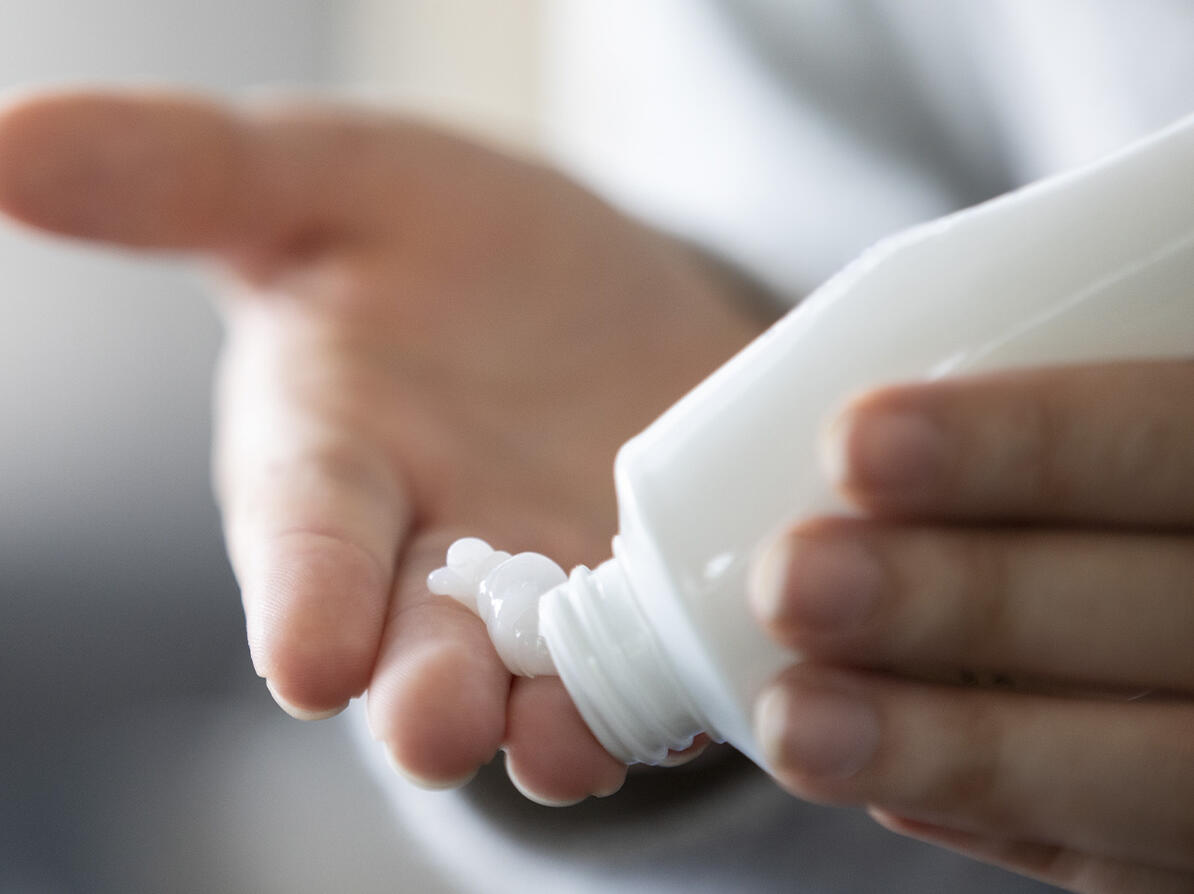Test: Which chemicals are used in creams with high fat content?
Creams with high fat content are good for dry and damaged skin. The test examines 12 of theses creams for unwanted chemicals, which can, among other things, act as endocrine disruptors.

Frequent hand washing can cause dry and damaged skin
Dry, rough and even broken skin can be a widespread problem for example on the hands during periods of frequent hand washing.
Hand washing washes off sebum, the natural lipids on the skin, and can leave hands dry, chapped and scaly.
Creams can help prevent skin eczema
Hand cream and particularly creams with very high fat content can be a good and effective treatment for dry and chapped skin.
Creams with high lipid content are amongst others also known as dermatological creams, lipid creams or repair creams.
Asthma-Allergy Denmark recommends such creams for both adults and children who have problems with dry skin to help prevent and relieve skin eczema.
Test results gives good and fatty choices
In most cases, the creams in the test have indicated a fat percentage of 70 percent or more. A few, however, are about 50 percent.
Most of the creams do well in the Danish Consumer Council THINK Chemicals review of ingredients.
The creams are free of a number of unwanted ingredients that can cause allergies or are suspected of being endocrine disruptors, for example. They are also free of perfuming substances.
One fatty cream contain suspected endocrine disruptor
One of the 12 creams contains the substance methylparaben. This is on the EU's list of substances suspected of being endocrine disruptors, among other things.
A single product with this substance is not in itself problematic for your health. However, it may be a good idea to limit the total "cocktail" of endocrine disruptors that you are exposed to in your everyday life.
Do you want to reduce your exposure to these substances? Then choose the creams that get the best chemical rating (A) in the test. They are all without known endocrine disruptors.
About the test
-
How we tested
Most creams in the test have a high fat percentage of about 70 percent or more. They are purchased in spring 2020. After purchase, product names and lists of ingredients are sent to manufacturers to check that the products are not obsolete and that the ingredient lists are correct.The test is a declaration test. In other words, it is a review of the ingredients that appear on the products' list of ingredients. The products have not been tested with chemical analysis in a laboratory or tested for how well they protect from the sun.
For example, we have assessed the ingredients of the creams whether they are suspected of being endocrine disrupting, allergenic or problematic for the environment.
What we found
12 of the fatty creams are included in the test and are distributed as follows:- 11 creams get best Chemical rating (A).
- One receives the lowest chemical rating (C). It contains the substance methylparaben, which is suspected of being an endocrine disruptor. Methylparaben is among other things on the EU list of substances suspected of being endocrine disruptors.
No illegal ingredients have been found in the test.
Methylparaben
Methylparaben is on the EU's original list of substances suspected of being endocrine disruptors.
The substance is also included in the Environmental Protection Agency's new list from 2020 as a suspected endocrine disruptor
Finally, the Centre for Endocrine Disruptors (CeHos) has assessed that methylparaben is a suspected endocrine disruptor. The assessment is based on the Danish proposal for criteria for endocrine disruptors.
CeHos assessment of Ethyl- and methylparaben (eksternal document)
-
- Turn down the temperature of the water when you wash your hands. Very hot water removes more of the skin sebum.
- Be sure to wash off the soap properly so that it does not remain on your hands.
- Apply creams to your hands often - preferably several times a day - especially if they are or are becoming dry.
- For dry, damaged skin, it is a good idea to choose a cream with a high fat content of about 70 percent. Just remember that fatty creams really make the skin quite oily. So wait a bit before you use your phone or computer.
- Apply creams to your hands just before you go to bed. Thus, the hands can enjoy the cream as long as possible before the next wash.
-
Karo Pharma Aps, responsible for Locobase Grease Cream:
"The EU Scientific Committee on Consumer Safety (SCCS) has carried out an overall assessment of all existing data from the different parabens. The VKF has assessed that methylparaben does not pose a health risk in cosmetic products in permitted concentrations (up to 0.4 percent (as acid) for singles and 0.8 percent (as acid) for mixtures of esters)). The amount of methylparaben (0.200 percent) in our product Locobase Fatty cream does not constitute an endocrine disorder as it is within the approved limit value."
